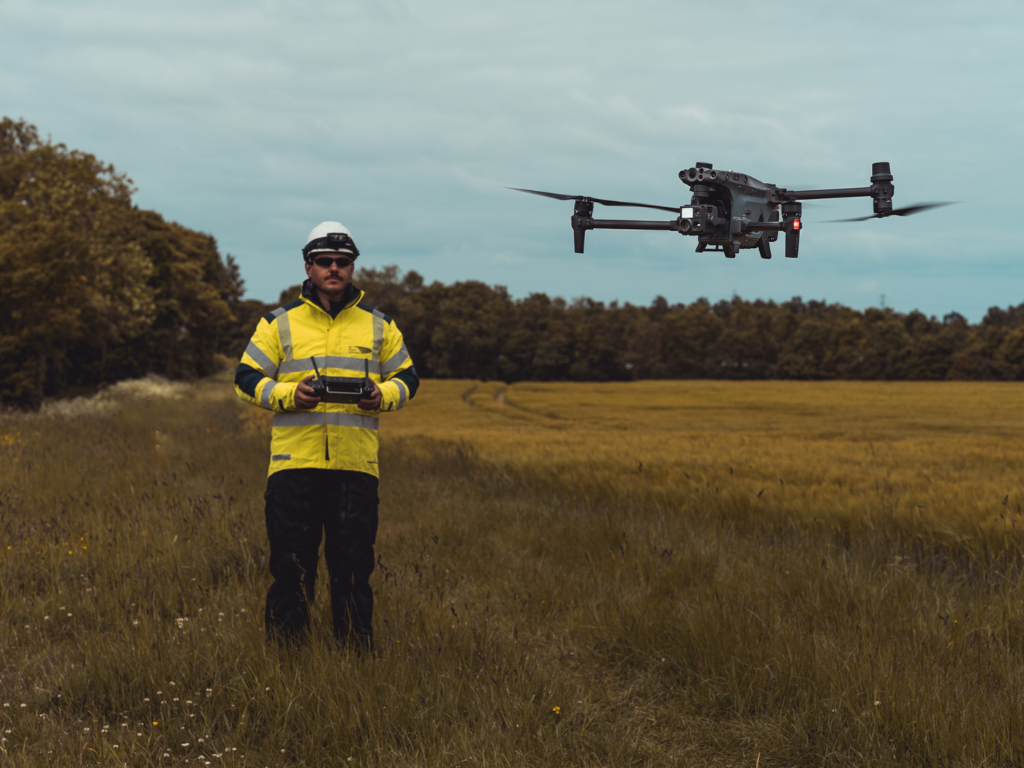
Case Studies
Drones Help UK Power Networks Fix Power Cuts Faster And More Safely
Learn how drones are improving fault response times & worker safety for UK Power Networks.
UK Power Networks is trialling drones to improve fault response along its rural networks;
The network operator estimates that drones will cut restoration times by an average of 30 minutes - reducing the length of power cuts for its customers;
Deploying drones also improves safety, removing the requirement for personnel to tackle difficult terrain;
heliguy™ trained eight pilots from UK Power Networks to help the firm adopt drone technology.
Electricity response teams are being equipped with drones to help restore customers’ power more quickly and safely.
UK Power Networks is exploring innovative ways in which drone technology can help improve fault response along its rural networks.
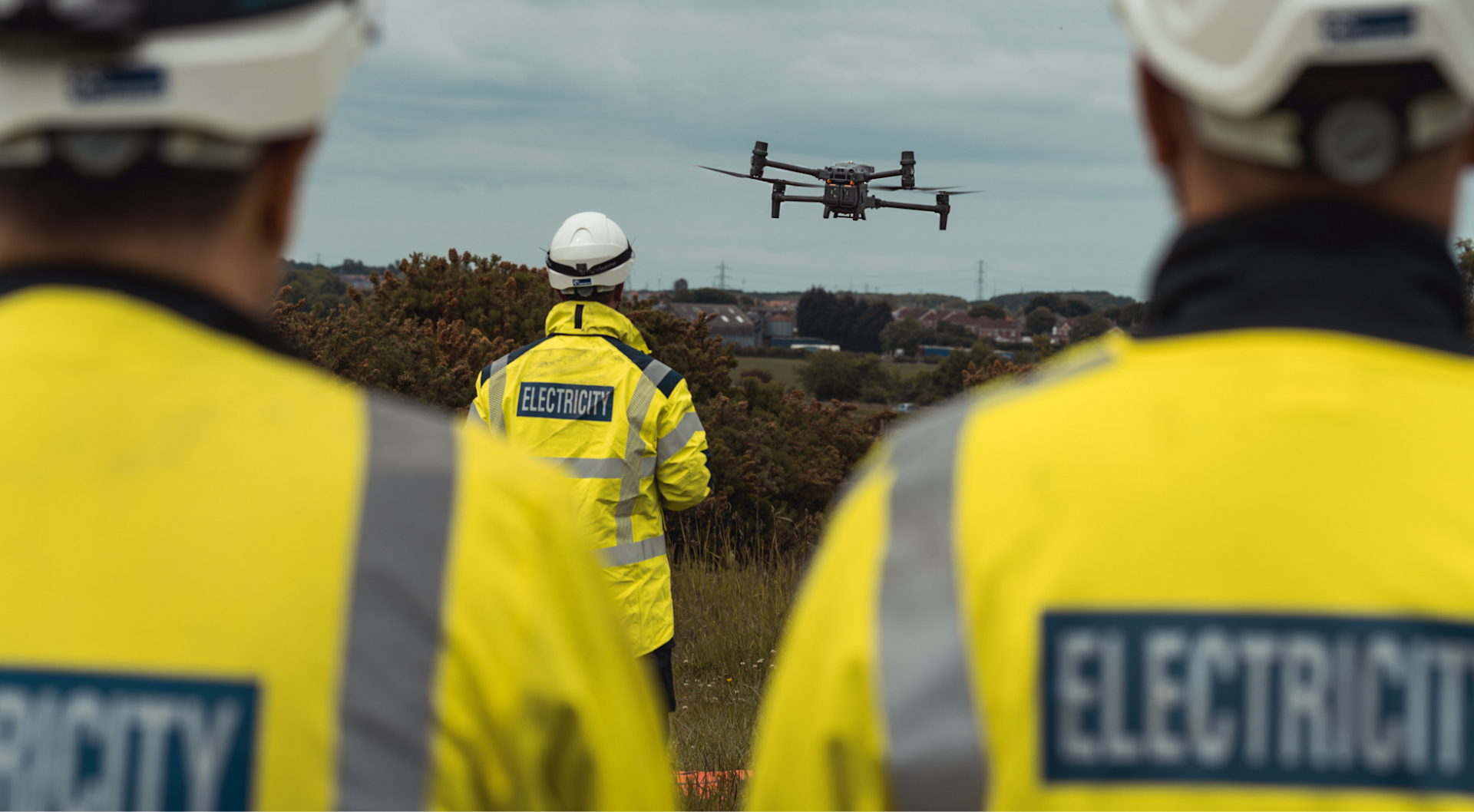
The firm is testing whether using high-quality video images from drones can pinpoint damage and help restore power supplies up to 30-minutes faster.
The technology can help spot any potential defects on the line and move repair crews and equipment into position faster. It also offers a safer alternative to walking the route or climbing a pole for inspections.
heliguy™ drone training team trained eight engineers at UK Power Networks to safely fly drones above high voltage overhead electricity lines in the South East and East of England.
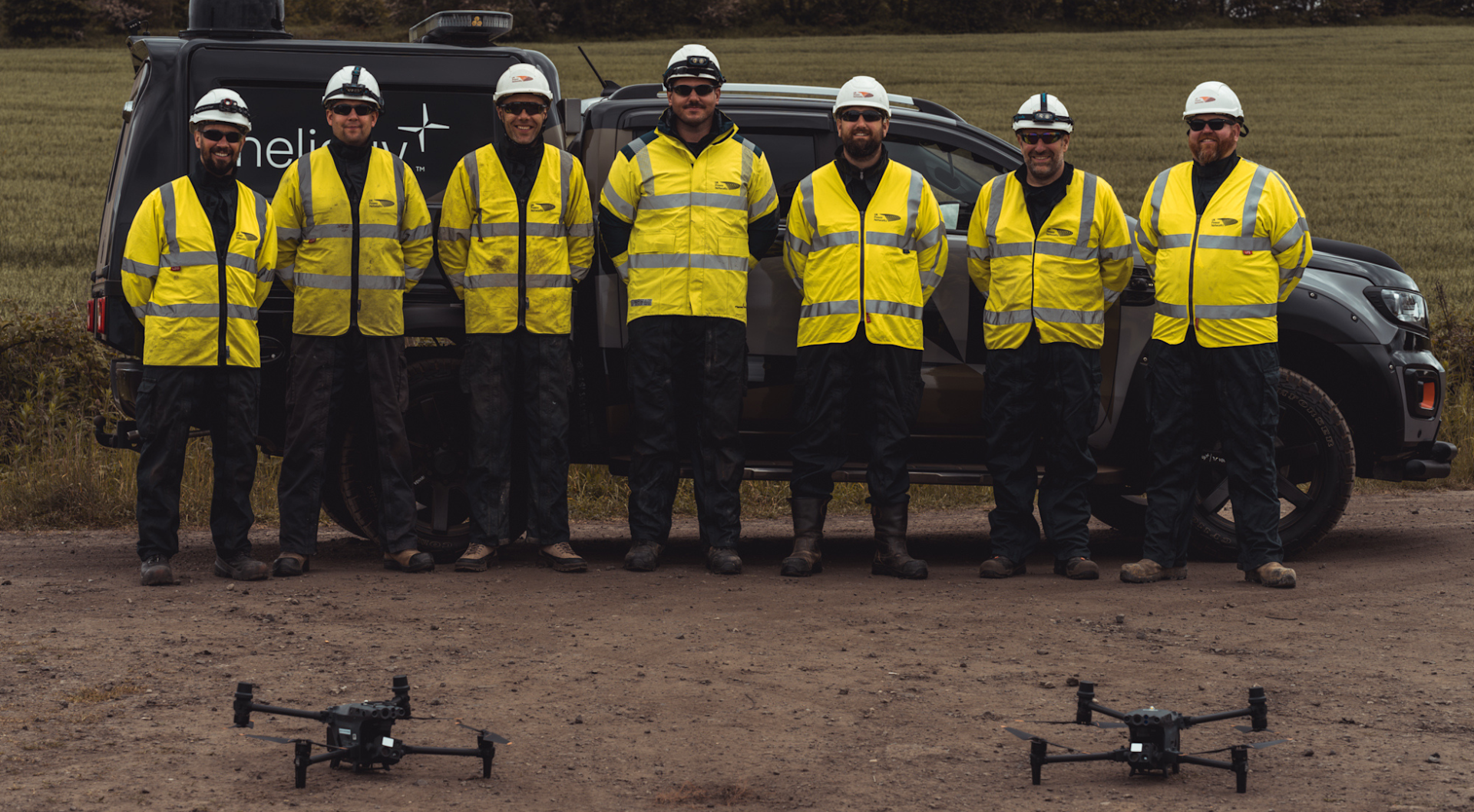
The technology is being tested in Eastbourne and Tunbridge Wells areas of East Sussex and Kent, and Colchester in Essex, exploring customer and safety benefits.
Engineers teamed up with UK Power Networks’ innovation team to trial the DJI Mavic 3 drones giving a bird’s eye view of power lines from a laptop. Pilots will fly the devices along the line of sight, logging all flights and abiding by Civil Aviation Authority regulations.
Phil Burke, leading the trial at UK Power Networks, said: “The reason we want to try drones is to find the causes of power cuts faster, work even safer and make power cuts shorter.
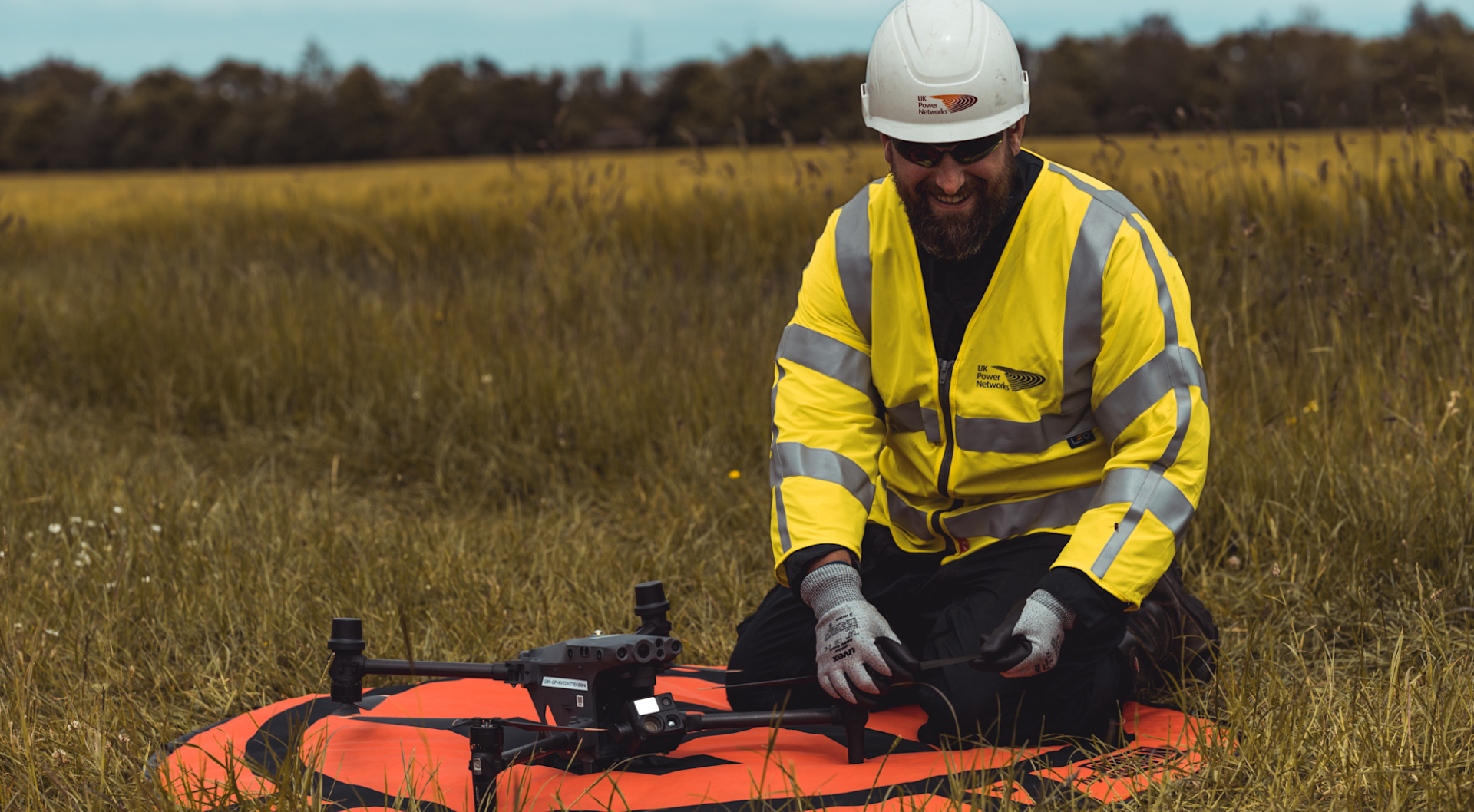
"A typical high voltage fault impacts 100 properties, after our initial process to quickly return power to as many as possible. We estimate that flying drones will cut our restoration times by 30 minutes on average.
“Traditionally we send a team to walk the length of the overhead line to find out where the fault is.
"Our teams face hedgerows, wire fences, ditches, woodland, fallen branches and uneven ground.
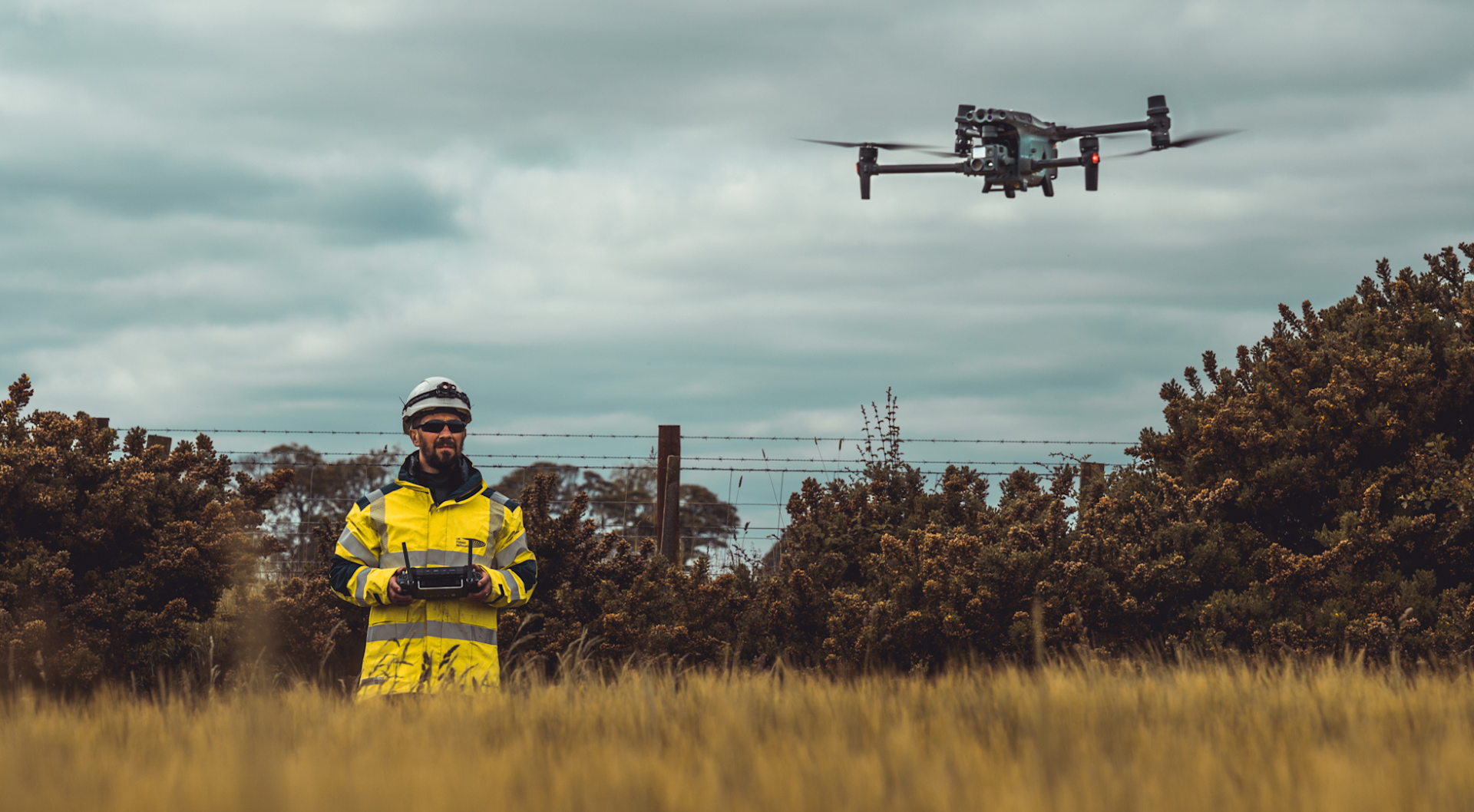
"Sometimes we’ll reach an obstacle like a fence and need to walk further away from the line to return to the same spot and continue the line patrol.
“Depending on the ground conditions, walking one kilometre of line can take anything from 10 minutes to an hour.
"Drones can fly a section of overhead power lines much quicker and safer than our linespeople could walk the line or climb a wooden pole to inspect equipment, reducing the risk of slips, trips and falls in rural areas.”
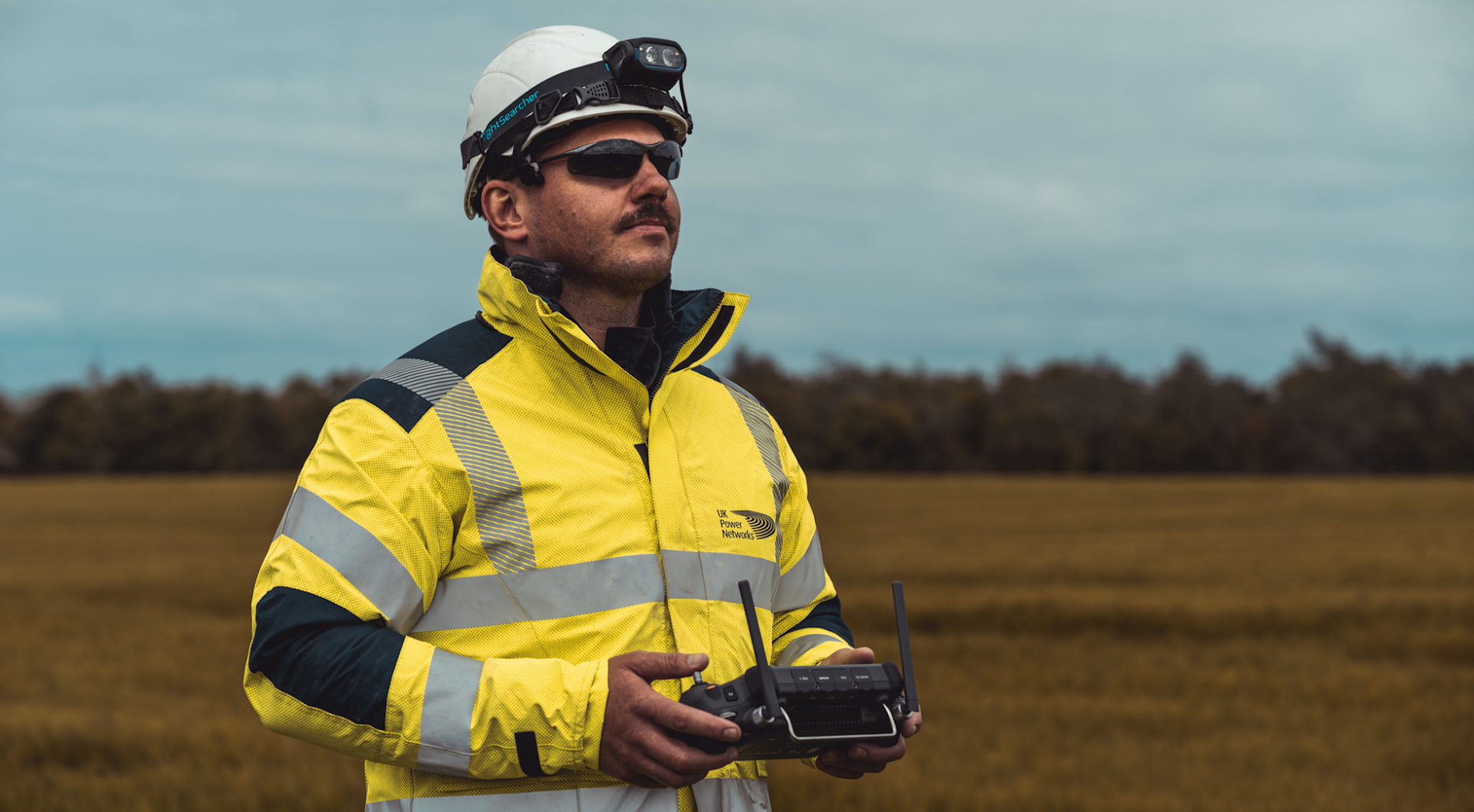
heliguy™ instructor Jack Sharp, who delivered the training to UK Power Networks, said: "Drones are a powerful tool for utility inspection, collecting highly-accurate data more efficiently and safely than traditional methods.
"It was a pleasure to deliver the training, helping UK Power Networks adopt drones and ensure its pilots are best prepared to deploy the technology legally, safely, and effectively.
"This will enable them to achieve maximum return-on-investment, helping to spot defects and minimise downtime to reduce the impact of power cuts to the benefit of their customer base."
Foot patrols will still be required in situations such as windy weather and darkness, and the company’s regular helicopter patrols will continue to cover longer distances more quickly.
